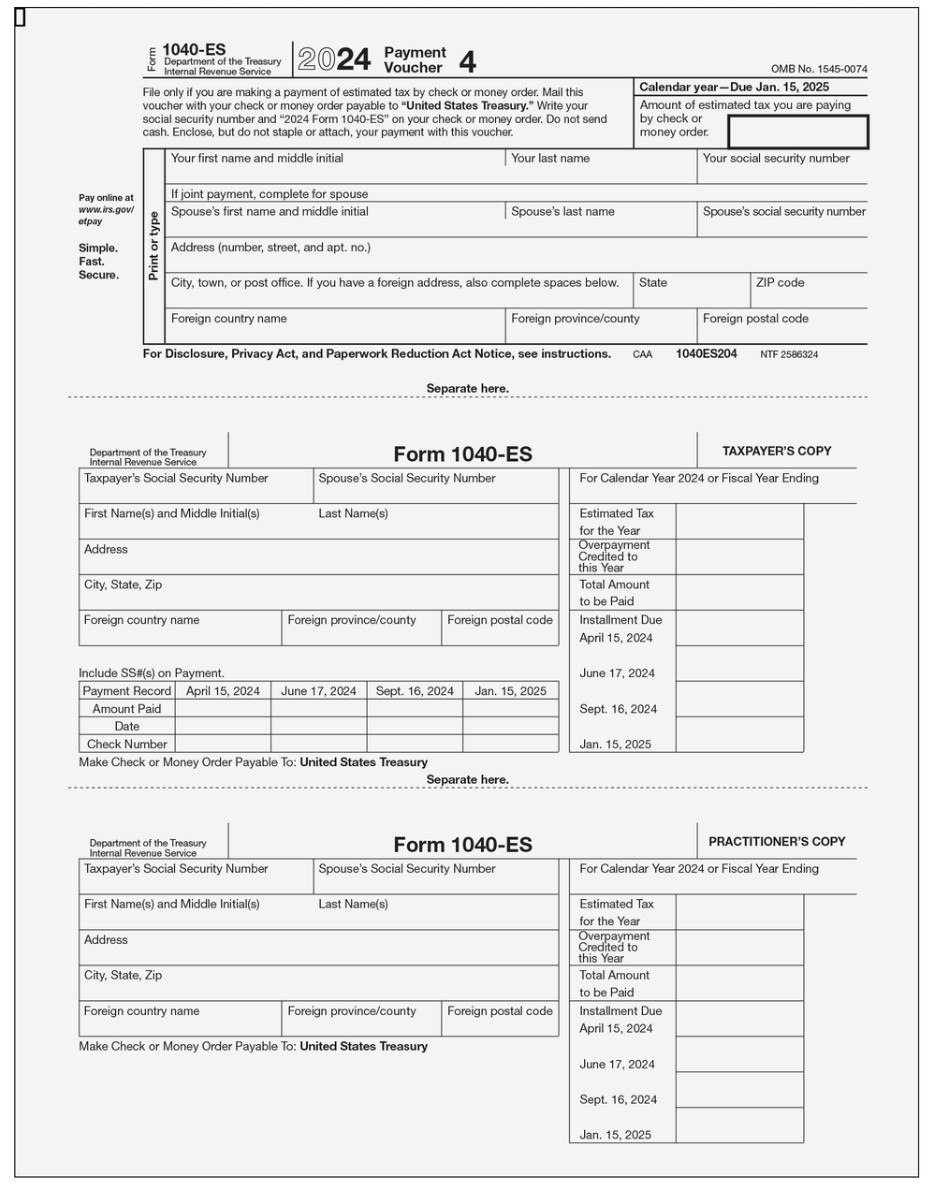If you:
Then quarterly taxes are a part of your life and something you need to plan for.

What Are Safe Harbor Quarterly Tax Payments?
Safe harbor quarterly tax payments are simply what you are required to pay in to the IRS to avoid underpayment penalties. The IRS wants you to pay taxes based on when you are making this income.
For high income earners, there are really 2 ways to do this:
Note: you can annualize your taxes and pay based on when the income is received but that will cost extra when doing your taxes. There are definitely times this makes sense to do.
110% safe harbor is all about paying 110% of the prior years’ liability.
Let’s say last year you paid $300k in tax.
To avoid penalties, this year you would need to pay in $330,000 equally through quarters to avoid penalties. This means you would do $82,500. If you have a salary and withholding happens there, then you would need to do $330,000 - your total withholding.
Let’s say that number is $50,000. This means you would have to do $70,000 a quarter to avoid penalties.
As long as you do this and get in 110%, then you have no penalties and the rest of your taxes are due in April. Even if your tax bill for this year was $750,000, you would be fine since you hit 110% of last years’ liability.
But make sure you plan for the liability over safe harbor.
1) If you will make more than the prior year - If you are going to make more than last year, this is the right way to go and then you can square up next April.
2) If you will project to make similar amounts to last year - Typically sticking with 110% in this situation makes sense, then you can always switch to 90% later in the year and reduce payments in Q3 and Q4. But this strategy works well as many times people are pessimistic then end up making more and then owe penalties.
This one is a little trickier and requires careful planning. I have seen a lot of folks end up with penalties by targeting 90% once they end up making a lot more than what they projected.
How 90% safe harbor works is you need to pay in 90% of your current years’ liability equally through quarters. If this year you will owe $300,000 in tax, then you need to get in $270,000 total, so $67,500 a quarter. As long as you do that, you are fine and will avoid penalties. Then if you have a salary that is $50,000, you would need to get in $55,000 a quarter to avoid penalties.
1) In years you project you will make a lot less than year before - Maybe the year before you had irregular bonuses, a business sale, a capital event, larger RSUs hit, etc. In those situations, targeting 90% this year would make sense. You do not want to have a $750,000 tax year the year before, then $300,000 this year, and then pay 110% of $750,000. You would significantly overpay.
2) In years income will be very lumpy at times - Let’s say this year you plan to make less but also might have a large event in one quarter. This means you may not have the cash to do 90% equally through quarters, and want to do 90% but annualize and pay based on when income comes in.
This could be a great move so you are paying tax when you actually earn the funds.
The last thing to chat about is overpayments from prior years. For most high earners, applying your overpayment to Q1 makes sense and then reducing what you pay in that quarter by that amount.
Let’s say you overpaid for 2024 by $20,000 and then your quarterly payments this year at $50,000. It makes no sense to get the $20,000 refund and pay in $50,000 and wait 1-3 months to get the cash back.
It makes a lot more sense to apply the $20,000 to Q1 and then pay in $30,000 to get to the $50,000 safe harbor number.
Safe harbor planning requires more than just paying what the vouchers say.
You have to look at:
Make sure you look at all the variables to strategize right after your taxes will be done.
You do not want to waste dollars on paying penalties to the IRS.

Financial Advisor